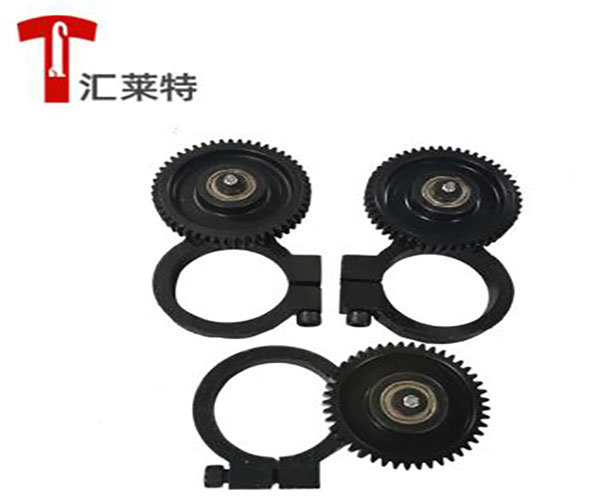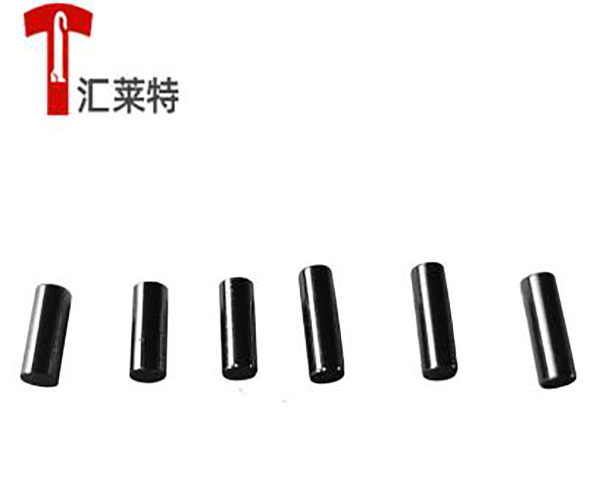How to avoid wear and tear on the head and strap of a high-speed rapier loom? The high-speed rapier loom is a type of shuttleless high-speed rapier loom, which is a commonly used high-speed rapier loom for weaving small and medium-sized batches of fabric with frequent variety changes. In the production process, the high-speed rapier loom uses high-speed weft insertion, and the consumption of the rapier head and rapier belt accounts for more than half of the total material consumption of the high-speed rapier loom. Therefore, it is crucial to effectively avoid the wear and tear of the sword head and sword rod strap in order to save production costs.

The hazards of wear and tear
The rapier head and rapier belt are key components for completing the weft insertion task in high-speed rapier looms. During the weft insertion process of a high-speed rapier loom, the weft yarn is always actively controlled by the rapier head, resulting in fewer errors and higher reliability in weft insertion. Once the sword head is worn, it can lead to a failure in weft insertion, and in severe cases, it can even cause a large number of broken ends in the warp yarn, affecting the quality of the fabric.
With a high-speed rapier loom running at 600 revolutions per minute and running for 24 hours a day, the rapier head reciprocates 1.72 million times a day. During long-term operation, the rapier head is inevitably worn out. The most easily worn parts of the sword head are the head, wings, and bottom. Every time the weft is drawn, the sword head is subjected to friction from warp yarn, guide hook, rapier plate, and guide rail when entering and exiting the sword. When the two wings of the sword head are severely worn and form a knife like shape, it is easy to cause warp yarn breakage, and even cause the sword head to jump out of the shuttle without being controlled by the guide hook, resulting in a large number of breakage.
[Reasons for wear and tear]
Production practice has found that most sword head damages are caused by the collision between the weft feeding sword head and the weft receiving sword head, resulting in fracture damage. This situation is caused by the clearance formed by the long-term wear of the transmission device and the rapier belt, which leads to the displacement of the rapier head. The wear of the rapier head of a high-speed rapier loom is also closely related to the variety woven, and the wear of the rapier head varies greatly among different varieties. Fabric with coarse yarn size and high warp density has severe wear on the blade and short service life. The service life of chemical fiber products is shorter, because the head of the sword rubs back and forth on the chemical fiber warp yarn, generating static electricity, causing a layer of hard substance to condense at the bottom of the sword head, making it easy to hang and break the warp yarn.
The composition of the sizing material used in warp sizing also has a significant impact on the wear of the sword head, and different sizing components have different effects on the wear of the sword head. The process structure of a high-speed rapier loom is also related to the wear of the rapier head, especially the higher the height of the back beam and the greater the tension of the bottom warp, the more severe the wear on the rapier head. Due to the high tension of the lower warp yarn, as the shed gradually closes, the lifting force of the lower warp yarn increases correspondingly, resulting in greater compression friction force on the guide hook and greater wear on the sword head.
The transmission between the rapier belt and the rapier wheel of a high-speed rapier loom is a special type of belt transmission: the rapier belt has rectangular holes, and during the transmission process, there is meshing transmission between the tooth root part and the rapier belt hole wall, as well as friction transmission between the rapier belt and the inner surface of the rapier wheel; The meshing angle between the rapier belt and the transmission wheel is usually 120 °~180 °. When the pitch is equal, there is no relative sliding between the transmission wheel and the rapier belt, and the pitch circular velocity of the two is equal; When the sword wheel swings and rotates, it forms a reciprocating linear motion of the rapier belt. Due to the rigidity of the flexible composite belt, the rapier belt needs to withstand a certain amount of bending stress when bent. Therefore, an arc-shaped pressure plate is designed to make the rapier belt move closely against the surface of the transmission wheel. However, the use of the arc-shaped pressure plate greatly increases the friction between the rear half of the rapier belt and it, resulting in thinning.
Preventive measures
The tightness of the time coordination between the weft insertion motion of the rapier and the opening motion of the warp directly affects the wear of the rapier head. The opening time of the warp yarn is too early, and the contact between the weft feeding sword head and the warp yarn is relatively small, while the contact between the sword head and the warp yarn is more frequent during the withdrawal of the sword, resulting in more friction and compression between the sword head and the warp yarn; Similarly, if the opening time of the warp yarn is delayed, there will be less contact between the withdrawal sword and the warp yarn, but there will be more contact between the weft insertion sword head and the warp yarn. Therefore, at this time, there will be more friction and compression between the sword head and the warp yarn. When selecting the size composition used for warp sizing, it is advisable to use chemical sizes to reduce the wear of the size on the blade, which can greatly extend the service life of the blade. At the same time, further research on the coating technology of the sword head, enhancing the wear resistance of the surface coating of the sword head, is of great significance for extending the service life of the sword head.
In the process structure of high-speed rapier weaving machines, a small height of the back beam results in less wear on the rapier head. However, it is worth noting that raising the rear beam appropriately is beneficial for improving the quality of the fabric surface. The clarity of the fabric texture and the depth of the grain peaks and valleys are much better than those of the rear beam at 1000 millimeters. Therefore, a reasonable height of the rear beam should be determined. When weaving fabrics with high warp density, the height of the back beam is generally about 1040 millimeters to ensure smooth weaving. The coating quality of the sword head is of great significance for its use. When the sword head enters and exits the shed formed by the warp yarn at high speed, the warp yarn generates alternating compressive stress on the surface of the sword head, causing fatigue wear and peeling of the coating. The peeled debris becomes very hard abrasive particles, which form abrasive wear on the sword head under the action of the warp yarn. Over time, a height difference is formed between the substrate and the coating, resulting in a cutting edge and causing the warp yarn to cut and stop.

From the perspective of transmission wear between the rapier belt and the rapier wheel, technicians often take measures to change the movement trajectory of the rapier belt on high-speed rapier looms to improve the meshing wear between the rapier belt and the rapier wheel. The variation of curvature and the degree of deflection directly affect the fatigue damage of the rapier strap, and the more changes there are, the more severe the damage will be. The meshing length between the rapier wheel and the rapier belt of the high-speed rapier loom is appropriately increased, and the average meshing force between the rapier belt and the rapier wheel will be reduced, which is beneficial for improving the service life of the rapier belt and the rapier wheel.









